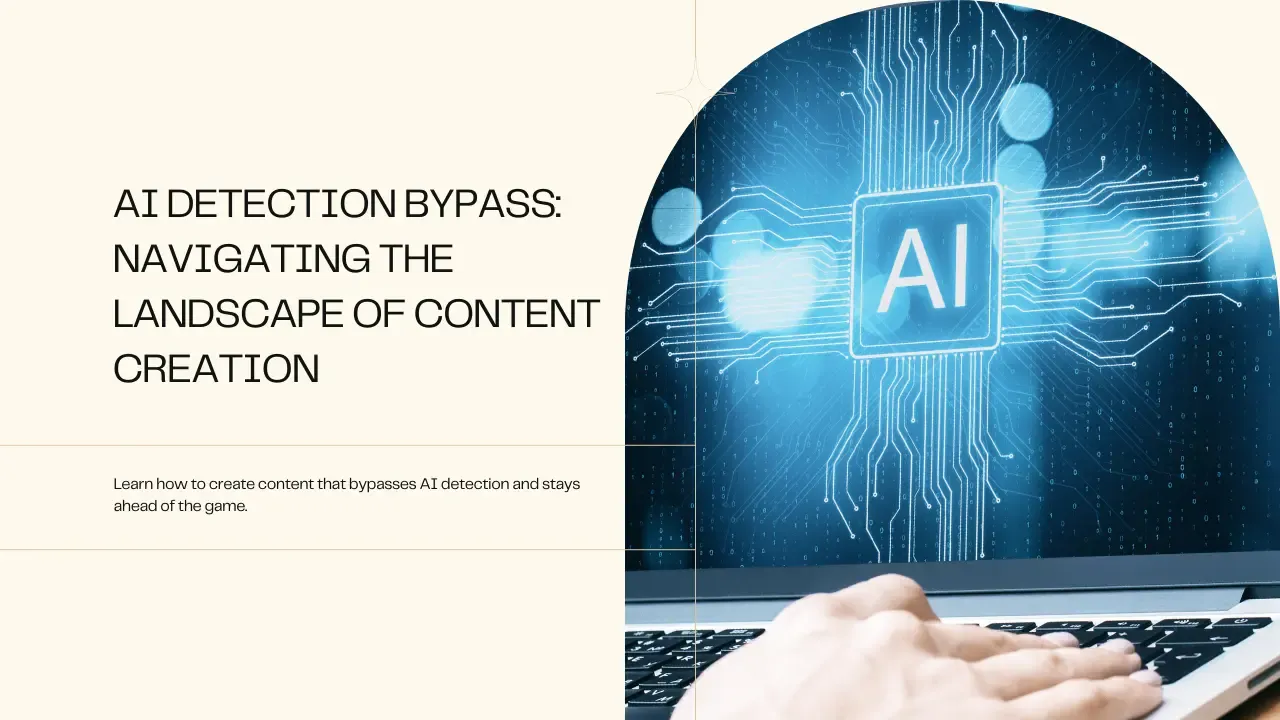
In response to the growing sophistication of AI detection tools, content creators have begun exploring techniques to bypass these detection algorithms, ensuring that their AI-generated content remains undetected and indistinguishable from human-written content. This dynamic interplay between AI detection and bypass techniques has created a rapidly evolving landscape, where content creators must stay abreast of the latest advancements to maintain the effectiveness of their AI-generated content.
Demystifying AI Detection Tools: How Do They Work?
To effectively bypass AI detection tools, it is essential to understand how these tools operate and the specific parameters they analyze to identify AI-generated content. Generally, AI detection tools employ a combination of linguistic, syntactic, semantic, and statistical analysis techniques to assess the content's characteristics and identify patterns that are commonly associated with AI-generated text.
- Linguistic Analysis: AI detection tools examine the content for linguistic patterns, such as repetitive or unnatural sentence structures, unusual word choices, and a lack of coherence and flow. AI-generated content may exhibit these linguistic anomalies due to the limitations of AI models in capturing the nuances and subtleties of human language.
- Syntactic and Semantic Analysis: AI detection tools evaluate the content's syntactic and semantic properties, including grammatical correctness, sentence structure, and logical consistency. AI-generated content may contain grammatical errors, awkward phrasing, or inconsistencies in meaning, as AI models may struggle to fully grasp the complexities of human language and its inherent ambiguities.
- Statistical Analysis: AI detection tools employ statistical analysis techniques to identify patterns in the content's word distribution, phrase length, and sentence length. AI-generated content may exhibit statistical anomalies that deviate from human-generated content, such as an unusually high or low frequency of certain words or phrases.
Unveiling AI Detection Bypass Techniques: Unveiling the Human Touch
With a clear understanding of how AI detection tools operate, content creators can employ various techniques to bypass these detection algorithms and ensure that their AI-generated content remains undetected. These techniques range from simple content editing and paraphrasing to more advanced data augmentation and style transfer methods.
- Content Paraphrasing and Editing: Content creators can utilize paraphrasing tools or human editors to modify the structure and wording of AI-generated content. This involves rewriting the content while preserving its meaning, effectively disguising the AI-generated portions and making them less susceptible to detection.
- Data Augmentation and Enhancement: Content creators can leverage data augmentation techniques to expand their datasets and enhance the quality of their AI-generated content. By incorporating diverse and high-quality data, they can train AI models to generate more human-like content that is harder for AI detection tools to identify.
- Content Blending and Style Transfer: Content creators can blend AI-generated content with human-generated content to create a seamless and cohesive piece of writing. This approach can help mask the AI-generated portions of the content and make it more difficult for detection tools to pinpoint them. Additionally, style transfer techniques can be employed to modify the writing style of AI-generated content to make it more similar to human writing, further reducing the risk of detection.
Striving for a Harmonious Balance: Detection and Bypass in Tandem
The ongoing evolution of AI detection and bypass techniques highlights the dynamic nature of the content creation landscape. Content creators must continuously adapt to the changing landscape by staying informed about the latest advancements in both AI detection and bypass methods.
Conclusion:
However, it is essential to remember that the ultimate goal should be to create high-quality, engaging content that resonates with the target audience, regardless of whether it is AI-generated or human-generated. By striking a balance between detection and bypass, content creators can harness the power of AI to enhance their content creation process while maintaining authenticity and delivering value to their readers.
